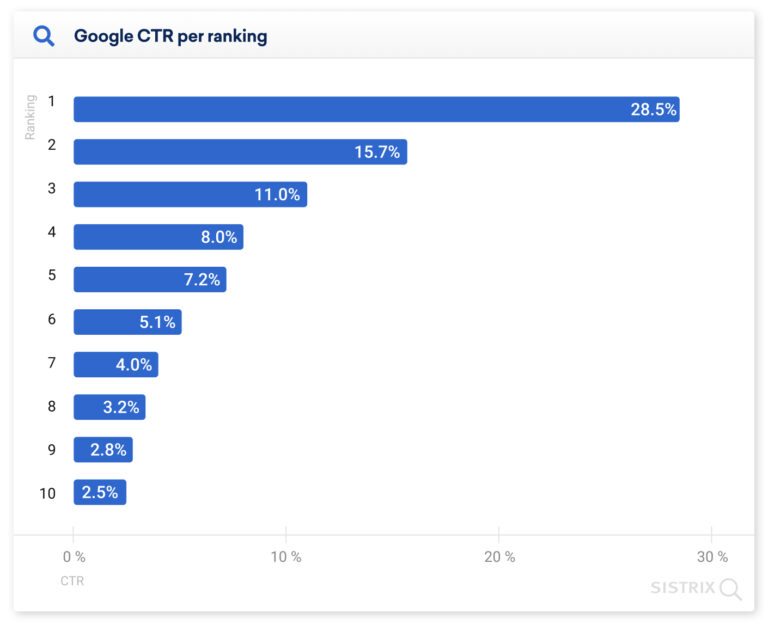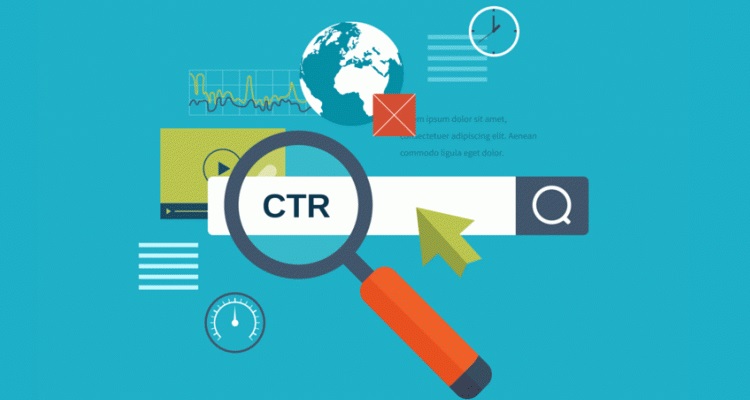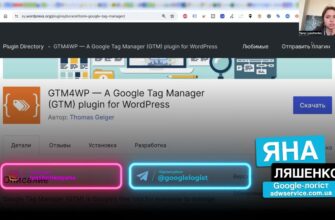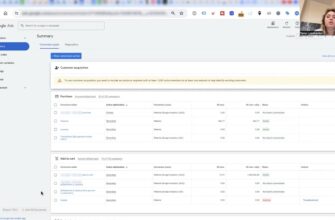- What is CTR in contextual advertising?
- Why is a high Click Through Rate so important?
- How to calculate CTR?
- What affects the clickability rate?
- Which CTR is considered good and which is critical?
- Normal CTR for Google AdWords
- What CTR is critical for search?
- Good performance for Google PPC
- Normal clickability for YouTube videos
- What is the normal CTR for Google search?
- What are the reasons for low CTR of ads?
- How to increase CTR in contextual advertising?
Marketing is an integral attribute linking directly the business itself and the sale of its products.
Modern conditions have caused the transition of advertising to a fundamentally new level – digital. Internet (Digital) marketing allows businesses to develop effectively, attracting new customers from the online space.
Internet marketing specialists work hard to create catchy banners, “tasty” for potential customers advertisements, attractive texts, applying increasingly sophisticated methods of modern online business promotion.
How many calls and sales will I get by ordering contextual advertising from you?
I need to calculate the conversion of my website Describe
the task
in the application
Calculate potential ad revenue Google
contextual advertising calculator
Various analytical tools have been created to evaluate the effectiveness of this work.
CTR is one of the ways to estimate the number of user visits to the site after clicking on a particular ad. Competent optimization of CTR solves at once 2 strategic tasks for Internet marketing: increasing the clickability of advertising (increasing the interest of the ad in the target audience) and improving its quality.
What is CTR in contextual advertising?
The concept of CTR comes from the English abbreviation Click Through Rate, which stands for the metric (i.e. measurement and evaluation) of the quality of online advertising customization.
To put it simply, CTR in contextual advertising is the clickability of the ad, and more precisely – the percentage ratio of user views of the ad and clicks on the link to the site to the number of displays of the ad in Google Ads.
Increasing this indicator is achieved in different ways: you create a unique, bright text of the ad with catchy headlines, additional links, extensions, etc. The brighter and more attractive the advertisement is, the more users will be interested in it.
Why is a high Click Through Rate so important?
A high click through rate of an ad is a guarantee that it will bring more targeted traffic to your website, and therefore the number of sales will increase.
So, a high CTR is:
- Improved campaign performance;
- Increasing the position of the ad in the search engine;
- Decrease in the price of a click;
- Ultimately – an increase in sales.
It is important to know that the higher the CTR and the more relevant the advertising campaign, the cheaper it costs the advertiser for each click to the site.
How to calculate CTR?
Marketers calculate CTR:
- for a specified period;
- for a set number of ad impressions.
The CTR (clickability ratio) formula is as follows:

Let’s assume that the ad was shown 100 times, and 6 people clicked on it. This means that the CTR of this ad campaign is 6%.
What affects the clickability rate?
CTR in advertising is inextricably linked to the following factors:
- The quality of the text content of the ad. In order to interest the audience, the text in the advertisement should be easy to read, structured, meaningful and specific. The last point is particularly important. The user must clearly understand exactly what product or service is being offered. Ads with a clear wording and description of the product give more responses than vague, abstract formulations;
- Informative nature of the ad. The advertisement should provide comprehensive answers to the basic queries of the consumer. The user, having read, seen the advertisement, should fully realize what he is offered, what this product is and what exactly the task it solves for him. It is important that the ad contains basic data: price, conditions and terms of delivery of goods, availability in stock and so on;
- Position in the advertising issue. The higher this indicator, the more clicks the ad will collect;
- Relevance to the target query of the potential buyer. Suppose a user is looking for a baby stroller, but the search engine gives him ads for construction tools. What is the probability that a person will click on your ad? Practically zero. In order to avoid such mishaps, it is necessary to carefully work out the semantics of the ad and minus words. This will allow you to be sure that your advertising campaign will be shown exclusively for targeted queries;
- Setting up targeting and target audience parameters. The more scrupulously the target audience is chosen, the more targeted ad impressions you will get. And this means that more users will be redirected to the site and move into the category of potential buyers.
High-quality text, ad design and correct targeting settings are the key to the success of an advertising campaign and, consequently, to increasing its clickability.
Which CTR is considered good and which is critical?
The assessment of clickability level can be different and depends on such components:
How many calls and sales will I get by ordering contextual advertising from you?
I need to calculate the conversion of my website Describe
the task
in the application
Calculate potential ad revenue Google
contextual advertising calculator
- type of advertising campaign;
- the option of advertising placement;
- the niche of the product or service being advertised;
- competition in the industry;
- the time the ad is displayed;
- time of day, specific day of the week and even season.
Normal CTR for Google AdWords
CTR rates for text ads in search and media ads in PBC can vary significantly. For text contextual advertising in Google AdWords, the average figure ranges from 5% to 10%.
Ads with less than 2% are considered ineffective (although this statistic is relevant for topics with average competition and for top ad positions).
If the click-through rate exceeds 10%, this CTR is considered good, and such an ad is a quality and effective ad.
What CTR is critical for search?
If the indicator is at the level of 0.5% Google may automatically stop displaying the ad, considering it as low-quality.
Good performance for Google PPC
What should be the normal clickability for Google PBC? Acceptable clickability for a contextual media network is in the range of 0.5-0.6%. In certain cases, a CTR of 0.1% is also considered good.
This is due to the fact that contextual advertising in search reacts to a specific user query, i.e. it is shown only when a person wants to find something specific, is interested in this product and is motivated to go to the site.
Advertising networks work differently. Here advertising content is displayed even when a person is just using the browser: looking for a movie, TV series, music or a book. He may be interested in a bright picture or an intriguing title, and only then he will visit the advertiser’s page, because the rates here are significantly lower.
Normal clickability for YouTube videos
- Paid advertising on YouTube. The average clickability of ads is about 0.5%. The indicator depends on how well the advertiser has selected the target audience and has fallen into its interests.
- Organic rendition (recommendation feed). These videos are usually more relevant to users’ interests and have a higher CTR. The YouTube algorithm is more willing to include videos that get more likes and views from users with similar interests. The clickability of recommendations averages between 4 and 5%.
What is the normal CTR for Google search?
In Google search results, CTR fluctuates greatly depending on the position of the site, height and content of the snippet. For example, if, thanks to micro markup, an SEO specialist has added quick links to other sections of the site, an emoji or a picture to the displayed snippet – in some cases this can increase CTR by 50%.
As you can see in the graph below, the first 3 positions on search get more than 50% of the total number of clicks. And positions 6 through 10 receive only 25% of clicks. Interestingly, according to some studies, the 11th position in the search engine gets more clicks than the 10th position (because it occupies the TOP 1 on the second page).

This is interesting! The largest CTR is received by the site for branded queries. On the first position clickability in this case can be from 70% and higher.
What are the reasons for low CTR of ads?
There are 3 most common reasons why CTR can be low:
- Wrong target audience. If the user does not have a car he is unlikely to need a set of winter tires at a discount. And fans of healthy eating in general cases should not show ads for pizza (although there are exceptions).
- Uninteresting offer. If the price in the ad is very different from the competitors’ offer in a big way – it can negatively affect the clickability of the ad. Study the competitors in your niche and create a UTP based on their advantages and then the CTR will grow, and with it the conversion.
- Unattractive ad. For search ads, you need to describe the company’s benefits as accurately and succinctly as possible in the ad description, and the headline should start with the query the user enters. For media ads, it is important to have juicy images and intriguing headlines to make the ad stand out on the content page.
How to increase CTR in contextual advertising?

In order to significantly increase your CTR, you need to:
- Use the right keywords. As a rule, high-frequency keywords are over-generalized. In order to bring them closer to your product, you should use medium-frequency keys or low-frequency keys. Be as specific as possible about the user’s possible query in order to accurately hit their intents. For example, you sell power tools. The most common keyword phrase in your case will be “buy power tools”. However, to focus on such requests in the advertising campaign is not worth it – because perhaps on your site there is no specific product that is looking for a potential customer. It would be more correct to use medium-frequency queries like
- :buy Makita drill in Kiev;
- battery for Bosch screwdriver;
- order a cutting wheel for a Bulgarian drill, etc.
Such ads will clearly correspond to user requests and the response to them will increase significantly;
- Adjust the list of minus words. If these words are present in the user’s request – ads will not be shown. This approach will reduce the number of non-targeted ad impressions. In order to select minus words, you will need to work with semantics. One tool for finding frequency keys is Google’s Keyword Planner. By typing in the name of your product or service, you will get a list of the most frequent keys. All you have to do is to scrutinize them and exclude those that are not suitable for describing your products. They will be the stop words for the advertising campaign;
- Add extensions, add-ons to your ads. This will make your ad more informative and useful. This includes
- :quick links;
- contacts for feedback;
- clarifying information;
- company address;
- rating;
- and many others.
- Properly design the advertisement. A good ad should contain clear, literate text with user-friendly wording and a call to action;
- Use analytics. This will give you the opportunity to run an ad based on the activity of your target audience, i.e. specifically for the time period when your potential customers are most active online. Thus, you can not only attract the right audience, but also expediently spend the budget of the advertising campaign.
Increasing the CTR – a guarantee that you will increase traffic on the site, and then, most likely, will increase sales.
It should be noted that it is incorrect to evaluate the effectiveness of the campaign only by CTR. In this case, it is important to evaluate all the indicators: relevance of the landing page, quality of the site, and most importantly – the final conversions.

















